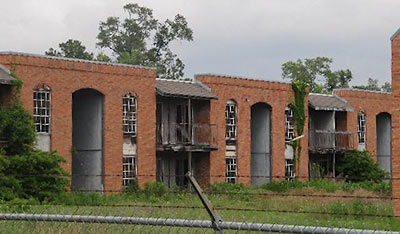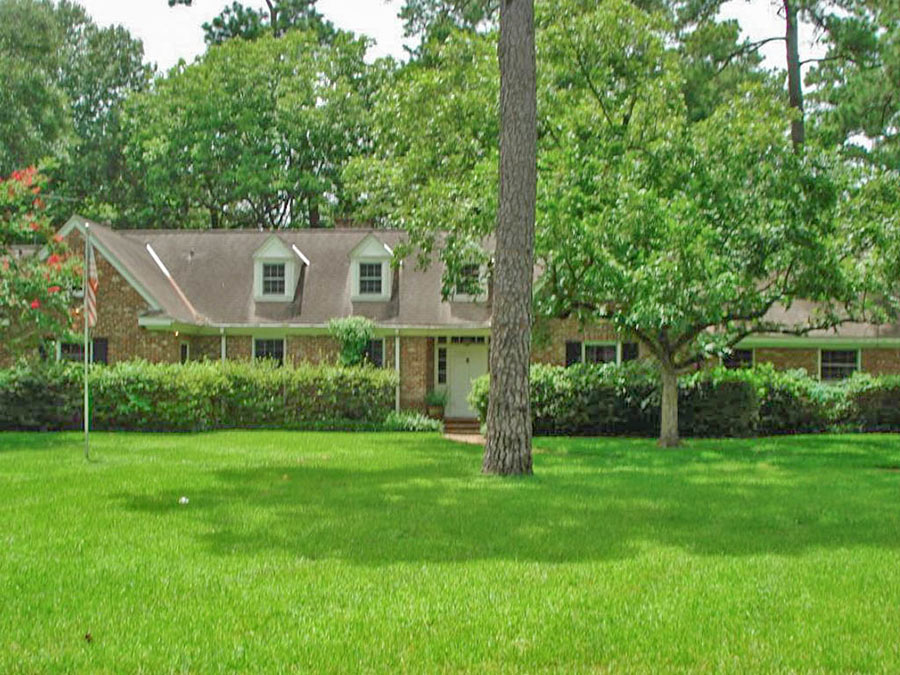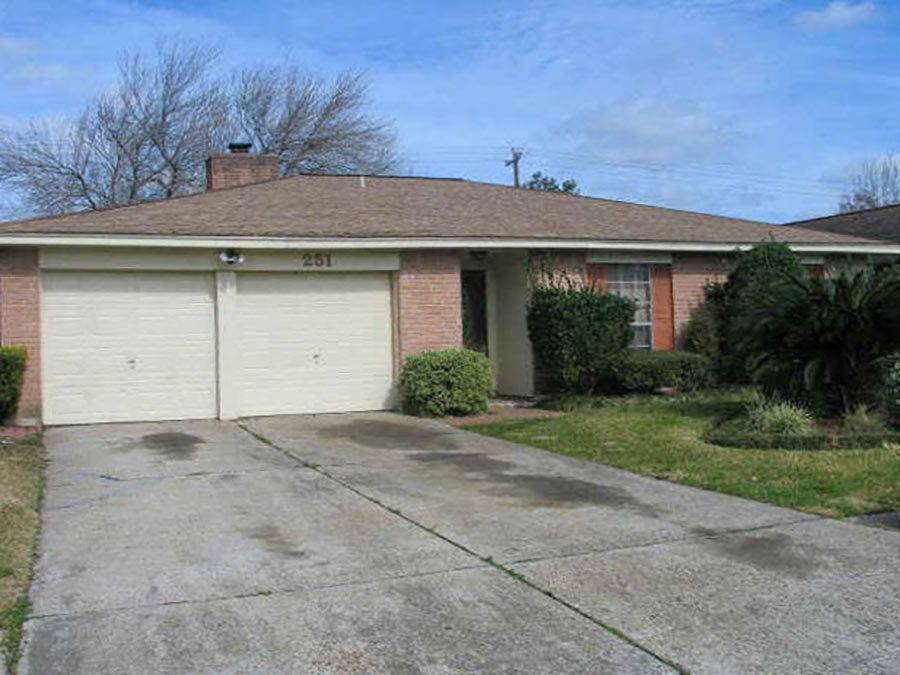
We need the room, for different kinds of apartments.
***
Commercial Structures
- Apartment complex, 2229 San Felipe St. 77019
- East Houston Estates Apartments, 7600 E. Houston Rd. 77028 (Pinewood Apartments; Bldgs. 6, 7, 8, 9, 10, 11, 12, and 13)
- 2323 Daugherty St. 77029
- Cambridge Court Apartments, 6500 S. Gessner Dr. 77036 (Bldgs. 3, 4, 5, 6, 7, 8, 9, 13, 14, and 15; more info)
- Prosperity Bank, 7950 Westheimer Rd. 77063
Residences
- 5315 Kiam St. 77007
- 5330 1/2 Petty St. 77007 (Cottage Grove)
- 39 W. Rivercrest Dr. 77042 (Rivercrest)
- 2205 University Blvd. 77030 (Southgate)
Photo of East Houston Estates Apartments: Commgate





Just a question about these Daily Demo reports. When these properties are listed, does that mean they will be demolished starting today, or merely they are now slated for demolition?
I believe the listings are the ones that have been processed (and approved) by the City of Houston on the previous day… so they’re eligible for demolition when the Owner schedules (whether it’s the next day, or many days off).
Thanks.
Does the city maintain a public list of abandoned apartments/buildings?
Sometimes these are already demo’d, and they just now are getting the permits approved. (I’ve seen countless homes in the Heights smashed only to appear on the Daily Demolition Report the next week)
It just means the City issued a demolition permit, although I’ve seen lots of the this structures hit the list AFTER the building is gone.
There was a house on this demo report that I saw being moved to another location.
I am more curious about the large apartment complexes. Thanks.
Wow- those East Houston Estates Apartments look to have been abandoned for decades!!
Too bad about 2205 University…
@d Yes, the city does maintain a Dangerous Building List, which is maintained by the Occupancy Department. The city does not actively demolish properties just because they are condemned. The process of demolition is extremely slow and more commonly, the buildings are not demolished.
Am I the only one that finds it creepy we have a “list” of buildings that are “approved” to be knocked down or ones with “certifications” to be rented etc?
.
If you want to knock your own place down, knock it down. If you want to rent your own property out, rent it out. wtf business is it of the city? IT’S NOT THEIR PROPERTY!
Cody, are you saying the City shouldn’t be making inspections to ensure that life safety regulations are being followed?
As for demolition, it’s in the public interest to ensure that buildings to be demolished have been properly disconnected from utilities, that hazardous materials are properly removed, etc. Not everyone is going to care about that sort of thing, unless there are penalties for failing to do so.
Ross: Correct, I’m saying that. Do they come into your house to make sure it’s okay and “safe”?
.
We have tenants, lenders, and insurance companies that make sure we’re keeping our properties safe. If our properites suck, they won’t rent, or lenders won’t lend, or insurance companies won’t insure. We have market demands that make sure we’re keeping them updated in terms of both style and mechanical. We’ve upgraded 100’s of units and dozens of buildings all without being “told” to. I don’t need the city coming by every 2 seconds to tell me to fill out another form and pay another fee. Or threatening us with fines because we didn’t ask how high when they told us to jump.
.
The red tag BS that we’ll get slapped on a place is normally because something wasn’t “registered” in a city database or they want a permit pulled (and $) for an otherwise very simple task. I’ve never gotten a red tag for something actually ‘unsafe’. The last red tag we got was literally because an outdoor light had an exposed wire. A simple fix ($.10 wire nut), but I need to hire an electrician to go and pull a permit to do the work, then have it inspected (guess who gets that bill? Tenants in the form of higher rent).
.
If the city notices something unsafe, or there is a complaint, I’m fine with a requirement to correct it. In fact, if a prius drives by and notices something unsafe that we (or our tenants) did not notice, then I’m appreciative of the heads up. But allow me to just get it done (they can come back and verify it was done) vs. having to go and deal with the city to do it.
.
At least from my micro perspective, the city has caused us to do less and have a worse product than if they’d otherwise leave us be. I don’t mind targeting places that truly are dangerous or ‘slumlords’ that are really letting a place rot. But the current shotgun approach of throwing a giant net over everyone isn’t the way to improve things.
Cody: the reason you have more intensive inspections on apartments, than you do on owner – occupied houses is because in an owner occupied house, the person who lives there is also responsible for the upkeep and maintenance; and people are less likely to let things slide if it affects them personally.
.
To put it a different way: for you it’s just an investment. For your tenants, it’s home. Yes, there’s are things your tenants are responsible for, but their are a lot of things that you, as a landlord, are also responsible for (the roof, foundation, public gates and parking areas). We all know that you, Cody, take these responsibilities seriously – good landlords do. But sadly, there are too many bad landlords out there for it to be on an honor system.
Oh and another thing, Cody: there are huge differences between the class B and C+ properties that you deal in, and the class D and D- properties that are at risk of being condemned.
.
The tenants in your properties have enough money to move out if you are not keeping up the properties. In many complexes, that’s not the case. Tenants are stuck because it’s all they can afford; or for other reasons.
Anyone care to point me in the direction of such a listing?
Zaw: I aggree. But in a sad way, if some of the “unsafe” D properties are fixed up, they are no longer affordable to the tenants who live there. So they move on to another D property. Bottom line is, if they are living in a crappy place, then logic would suggest that its the best place they can afford as if they could move into something better they would. It sucks to think about it like that but that’s the way it is.
.
So the city saying “This doesn’t meet our standards” just means someone fixes it up, and thus can charge more rent (and has to due to make up the cost), and what happens to those renters? The city feels better about making a difference but the renters are left out to find the next slum they can afford. And those are in bad areas because the city tends to leave those properties alone (our Montrose stuff gets tagged for ANY small thing, where is our further-out stuff stays untouched)
.
I see it happen all the time on a smaller scale. We buy D’ish properties in good areas. The tenants like the deal the had: They live in a good area, pay next to nothing in rent, but the tradoff is the owner does almost nothing with regards to repairs or upgrades.
.
I buy the property, fix it up, raise the rents, and those tenants are out to find something “bad”. To them, my repairs and upgrades were unwanted. We bought a property in Montrose less than a year ago. A 10 unit. Within 4 or 5 months, 9 of the 10 tenants were out because they couldn’t afford the new rent after I improved the place (they were paying ~$500. Now it’s ~$700). And I couldn’t “afford” to charge the old rent given the money put into the place. I’m sure the neighbors are happy (the city still isn’t because I didn’t do all their paperwork stuff), but I’m curious where all those renters went. Likely to the next property on our list to buy where it’ll be wash-rinse-repeat.
Cody: this is part of why I’m such a big proponent of using Low Income Housing Tax Credits to help renovate distressed properties while keeping them affordable (instead of using the credits to put up new housing on open land) The tax credits offset the costs of improvements and allow landlords to keep the prices low. They also are required under the LIHTC program to rent to a certain recent age of low income tenants, so they have to keep rents low.
.
Now of course using LIHTC to buy and renovate apartments can be dicey. If you do it wrong you’ll face huge neighborhood backlash. But if it’s done right, it’s really a great thing for everyone – developer/owner, tenants, and neighbors.
Any more info on what is going up at 2229 San Felipe? That’s my neck of the woods and it was sad to see such a large estate get demo’d.